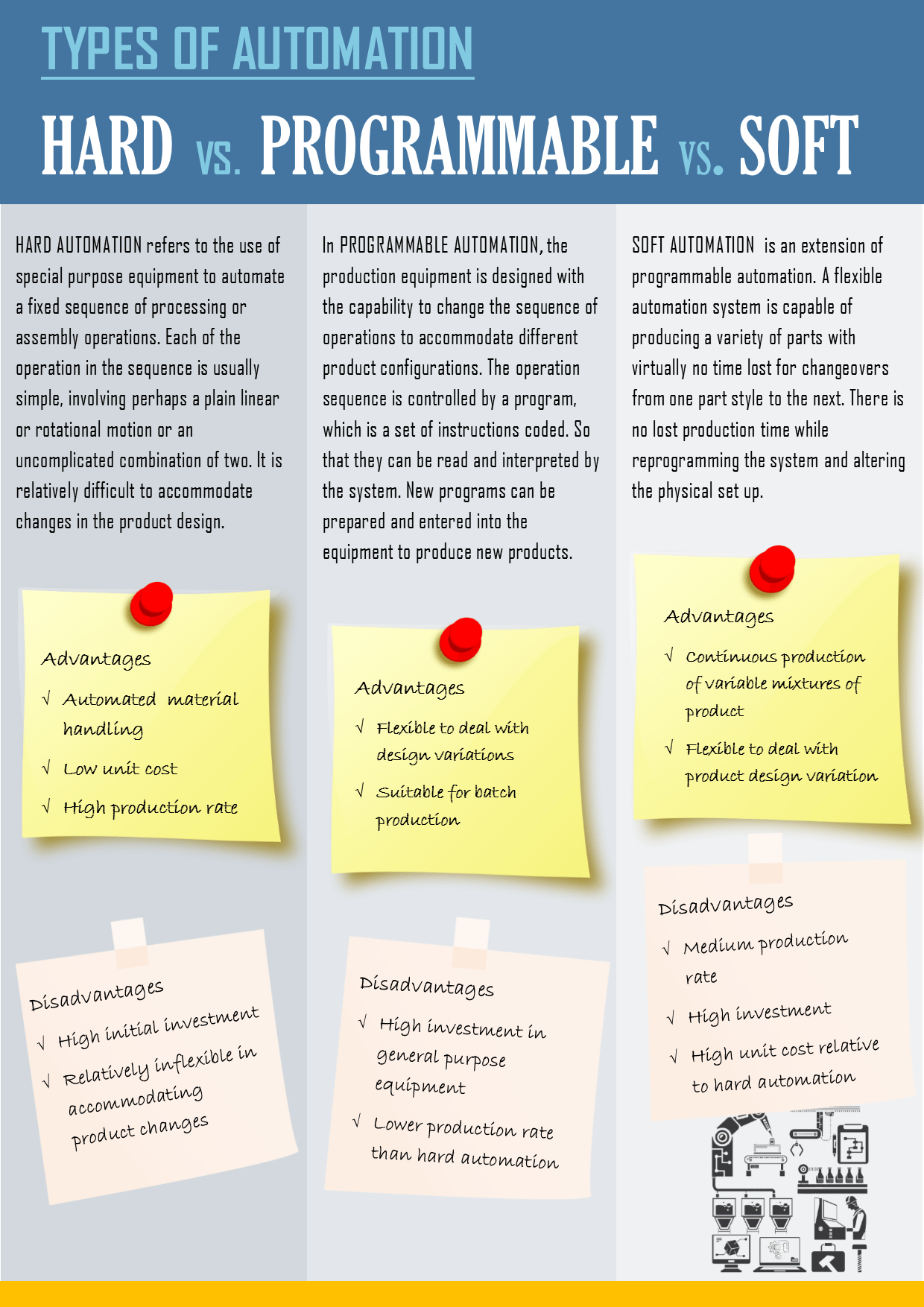Benefits of automated production lines
Why should I automate my production line?
An automated production line is comprised of a series of workstations linked by a transfer system and an electrical control system. Each station performs a specific operation and the product is processed step by step as it moves along the line in a pre-defined production sequence.
A fully automated production line does not need people directly involved in the operation, and all or part of the process of the production is completed by mechanical equipment and automated systems. Therefore, in an automated environment, the tasks of human are more likely to change to system design, adjustment, supervision and monitoring the operation of the system rather than controlling it directly.
There are three types of automation in production: Hard automation (also known as ‘fixed automation’), programmable automation and soft automation (also known as ‘flexible automation’). The type of automation to utilise is determined by the type of product and volume.

Following the programmed commands, an automated production line is a process that raw materials enter and finished products leave, with little or no human intervention. The fast, stable and accurate production flow contributes to the reduction of production times and the cost of the manufactured products. The use of automated production lines significantly reduces production costs and labour costs, and minimizes human errors, ensuring output consistency and quality.
The use of automated production lines frees up people from the drudgery of repetitive tasks – replace human labours in tasks done in dangerous environments, and perform tasks that are beyond human capabilities of size, weight, speed and endurance.
Carefully planned investment in automation can also make good financial sense. A two or three year payback on reduced labour costs is the equivalent of an excellent 30%-50% return on investment.
Moreover, many of the world’s most successful economies, such as Germany and Japan, have high investment in automation.
Automate or not. That is the question!
Looking at those benefits mentioned above, there is a strong case to examine the opportunity to automate. However, manufacturers must understand how to make automation work for them and to look at the various options. The use of an automated production line is not just about eliminating labour, and so it is necessary to clarify what the automation is intended to achieve and as to how this fits in with the overall business objectives.
You know your process and we know automation.
Contact us today!
See other infographic: Top benefits of automation in manufacturing